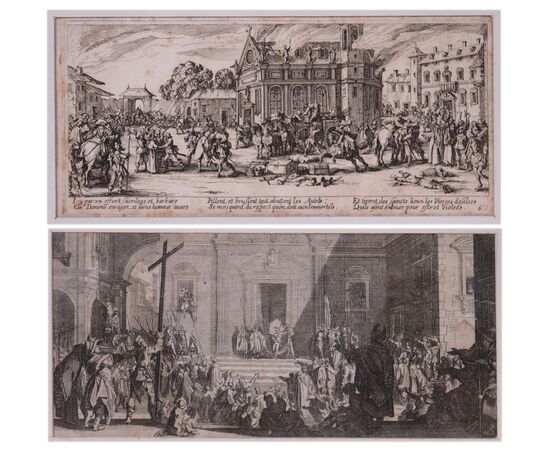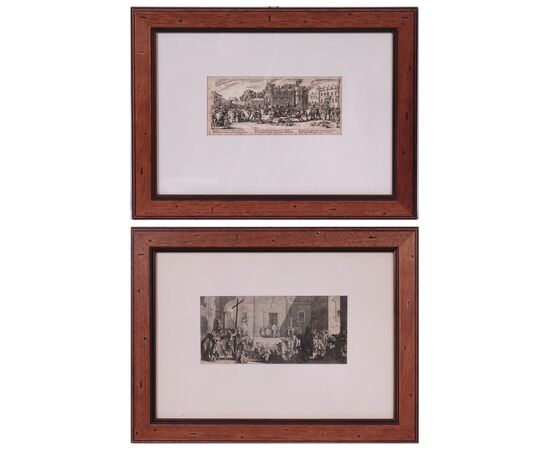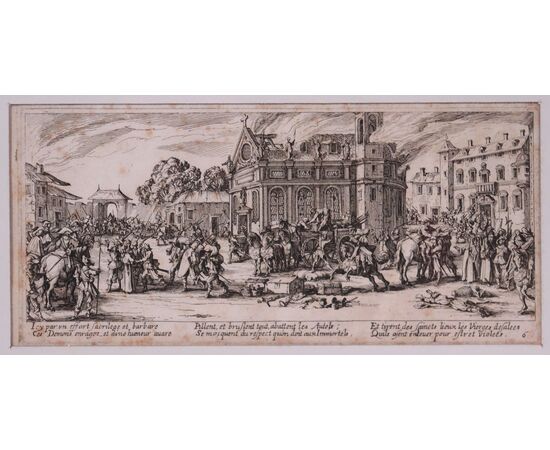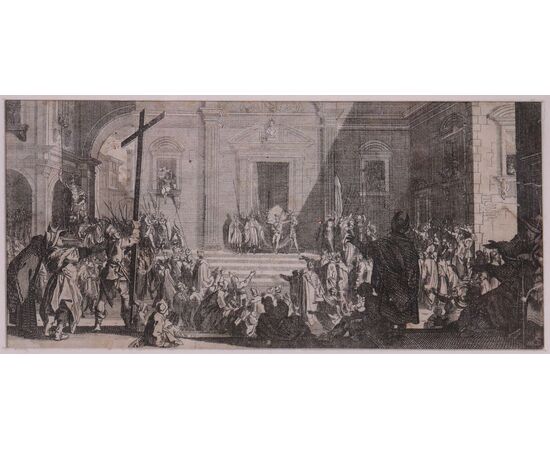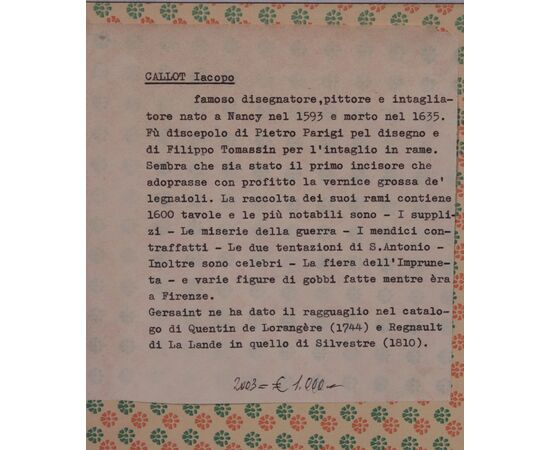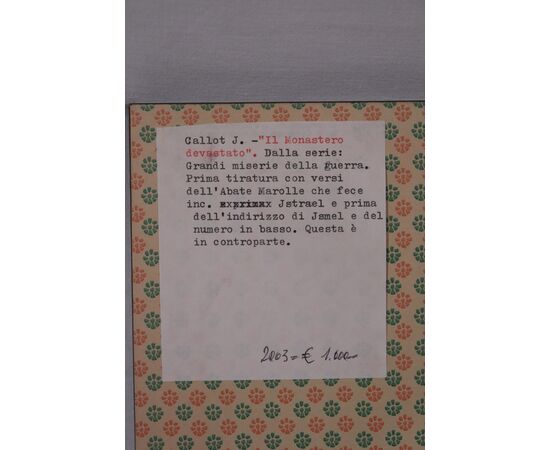Jacques Callot (Nancy 1592 - 1635) - pair of etchings
Pair of etchings.
Dimensions: 20x10cm with 40x30cm frame
Jacques Callot (Nancy, 1592 - Nancy, 1635) was a French engraver.
He was born into a noble family related to that of the duke. At fifteen he entered the workshop of the goldsmith Demange Crocq, where he learned the rudiments of drawing with Jacques de Bellange and Claude Deruet as well as the use of the burin.
Subsequently, in 1608 he found Rome, at the Troyes engraver Philippe Thomassin, where he perfected his practice with the burin, copying the works of Italian and Flemish masters. In this phase he was attracted by the works of Agostino Carracci.
In 1612 he moved to Florence, remaining there for nine years under the protection of Christina of Lorraine. Here he recorded the Temptation of Saint Anthony in 1616 by the engraver Giulio Parigi, in 1617 the series of Capricci, inspired by theater, popular costume and Carnival, between 1619 and 1620 the six tables accompanying the first edition of Prospero Bonarelli's Suleiman, finally in 1620 the Impruneta Fair . In Florence he experimented with the etching technique which will become one of his favorite expressive modes. His engravings highlighted a rather personal and original artistic language, halfway between the gallant and the grotesque, supported by an extremely refined compositional taste. [1]
In 1621 he settled in Nancy, where he engraved the drawings brought back from the Peninsula: the Gobbi , the Balli di Sfessania and the Great Passion . With the cycle of the Gypsies he intensified his interest in everyday events and an increasingly realistic vision of the world.
In 1624 he married Catherine Kuttinger.
In 1627 Breda was found where he engraved the siege of the city, subsequently with the same technique, he fixed on the map both the siege of Saint-Martin-de-Ré and that of La Rochelle, always on behalf of King Louis XIII.
Between 1628 and 1631 he stayed several times in Paris, where he entrusted the edition of his plates to Israël Henriet.
Returning to Nancy in 1632, where he witnessed both the French invasion of the Duchy of Lorraine and the plague, he performed The Miseries of the War in 1633 and the second version of the Temptation of Saint Anthony dedicated to Louis Phélypeaux.
From his surname derive the so-called Callot-style figurines which are comic or grotesque miniatures executed, to decorate snuffboxes and boxes, in gold or silver, or painted on porcelain. In Italy they are also known as caramogi .

